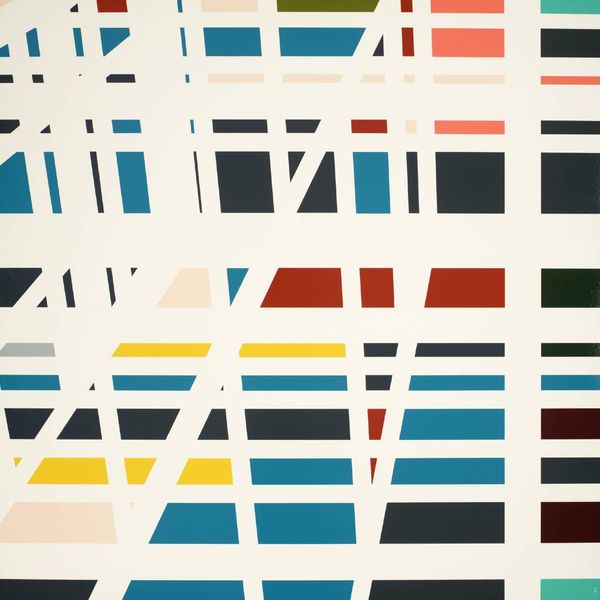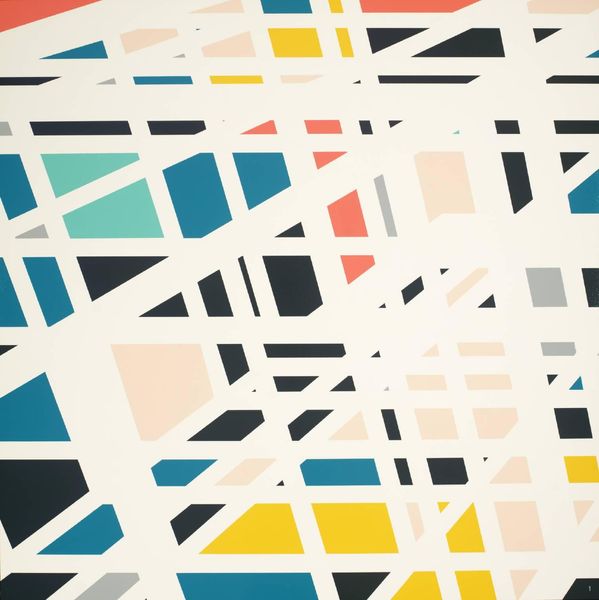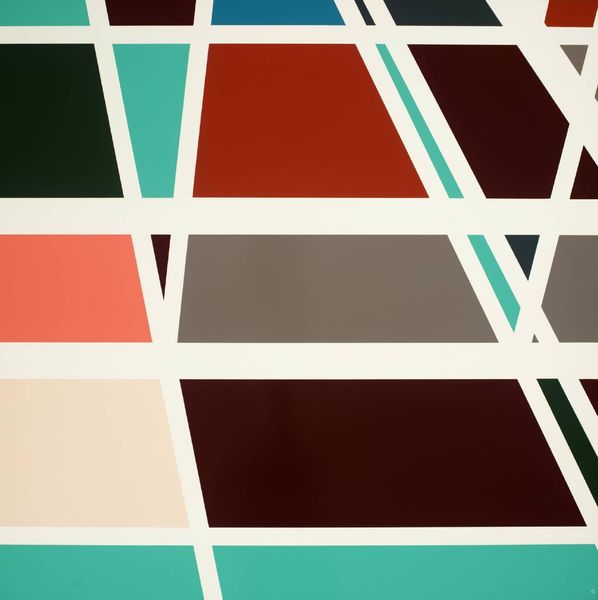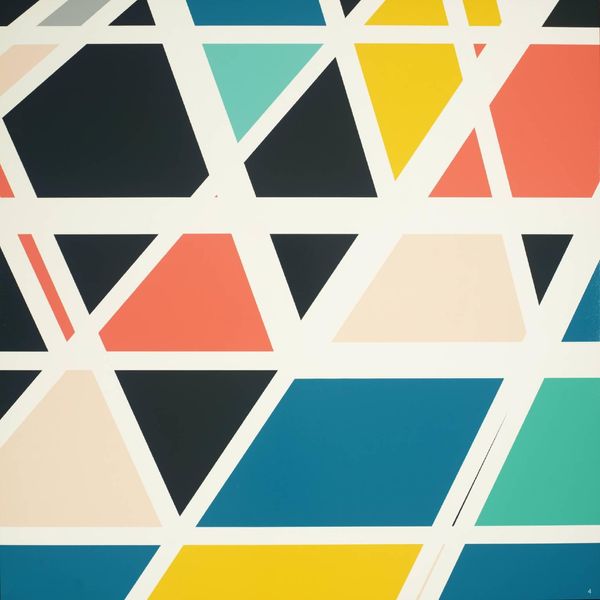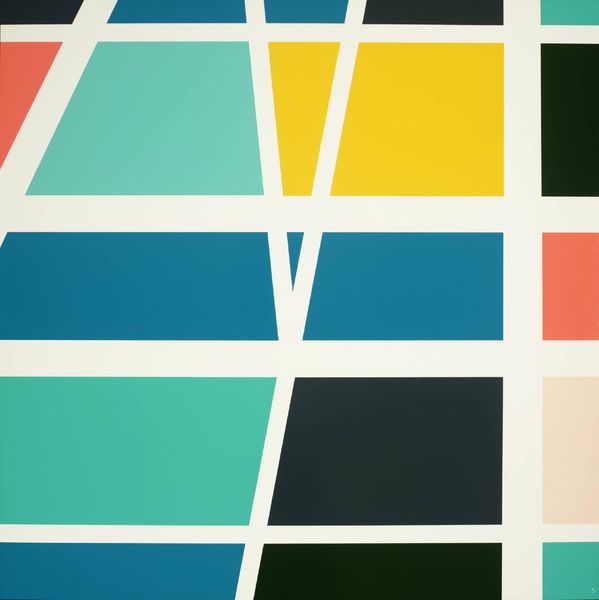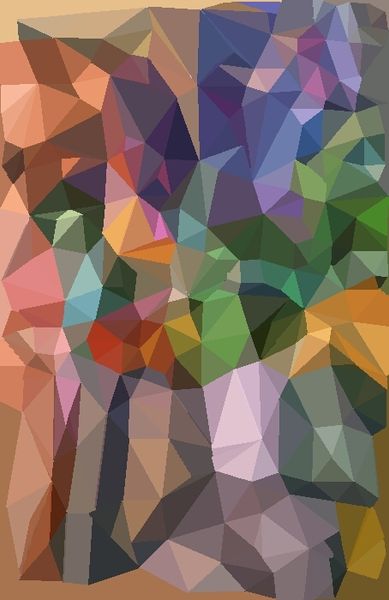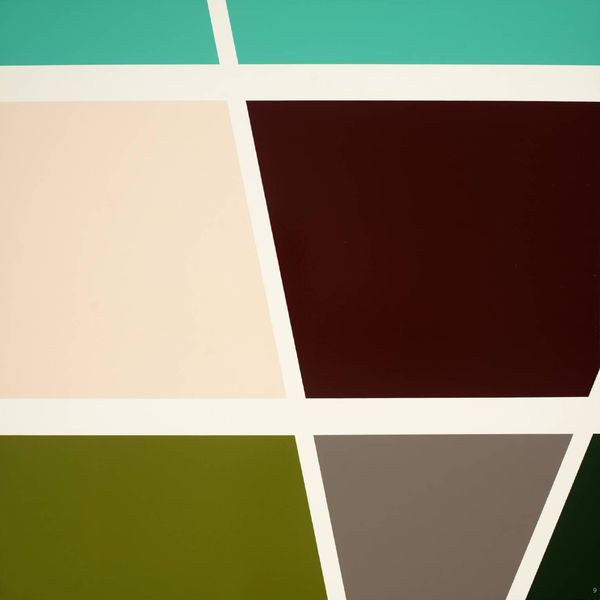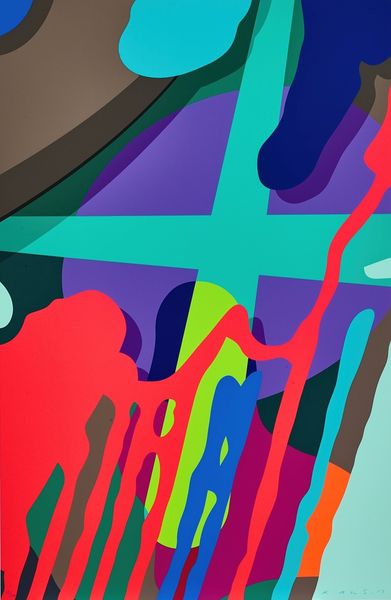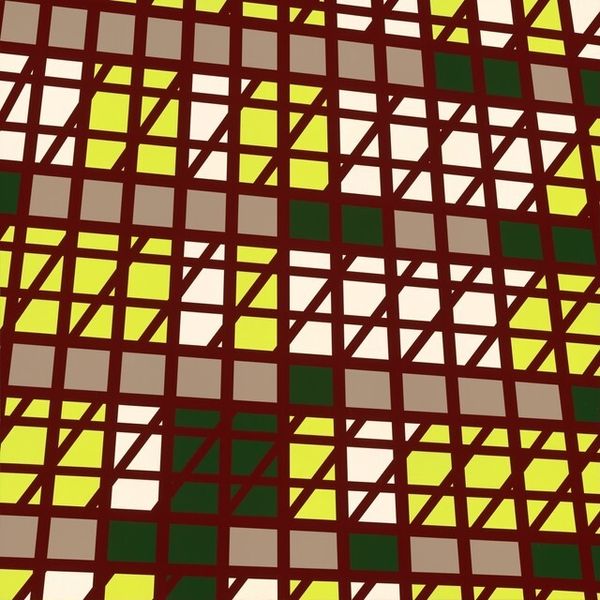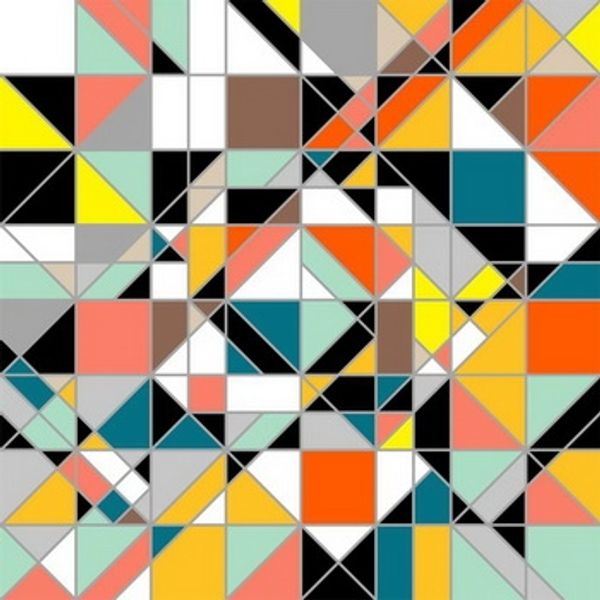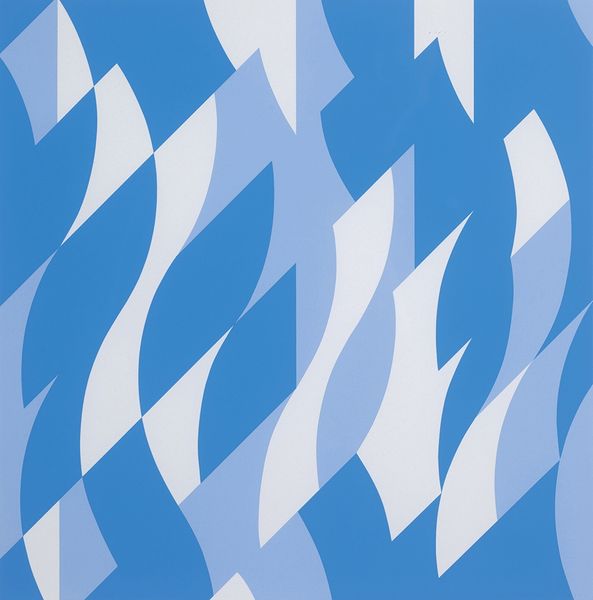![[no title] by Sarah Morris](/_next/image?url=https%3A%2F%2Fd2w8kbdekdi1gv.cloudfront.net%2FeyJidWNrZXQiOiAiYXJ0ZXJhLWltYWdlcy1idWNrZXQiLCAia2V5IjogImFydHdvcmtzL2UzMmZiMjBiLTYyNGUtNDhhMS1iNGNmLTE1ZDc3Yjk1MmRkMC9lMzJmYjIwYi02MjRlLTQ4YTEtYjRjZi0xNWQ3N2I5NTJkZDBfZnVsbC5qcGciLCAiZWRpdHMiOiB7InJlc2l6ZSI6IHsid2lkdGgiOiAxOTIwLCAiaGVpZ2h0IjogMTkyMCwgImZpdCI6ICJpbnNpZGUifX19&w=3840&q=75)
Dimensions: image: 737 x 737 mm
Copyright: © Sarah Morris | CC-BY-NC-ND 4.0 DEED, Photo: Tate
Curator: Sarah Morris, born in 1967, created this untitled piece, now held in the Tate Collections. What strikes you first? Editor: It feels like a disrupted grid, or maybe a deconstructed city map, all those colorful shapes battling for space behind the white lines. Curator: Morris often explores architecture and urban environments; she uses geometric abstraction to capture the energy and flow of these spaces. Editor: I get that, but it's also strangely unsettling. The angles, the almost-but-not-quite symmetry... it creates a tension, a feeling of unease. Curator: Perhaps that reflects the often-unseen tensions within those environments – the power dynamics, the social divisions. Editor: I think I prefer thinking of it as a puzzle where some pieces are missing—more poetic that way. Curator: And sometimes, dear friend, art is just a puzzle. Editor: Indeed. A very stylish, thought-provoking puzzle.
Comments
Join the conversation
Join millions of artists and users on Artera today and experience the ultimate creative platform.
tate 6 months ago
⋮
Dulles (Capital) is Morris’s first major print work. The portfolio comprises nine square prints containing abstract geometric grids. Blocks of bright greens, turquoise, yellow, browns, orange and greys are separated by white lines which appear recede into the distance at an extreme perspective. All nine prints may be displayed together, each print separated by 3.5cm of white wall, which becomes part of the work. They form a large square, depicting another, larger grid that echoes the structures within the individual prints. Displayed in this way they provide an off-centre variation of Morris’s painting Constitution Gardens 2000, (private collection). Each print is numbered in the lower right corner to designate its position within the overall grid. The bottom row (Tate P78602-P78604) is made up of large blocks of colour which become more broken up in the middle row (Tate P78599-P78601). By the top row (Tate P78596-P78598) the dense three-dimensional structure has become an intricate array of fragmented blocks and splinters of colour. Alternatively, the prints may be displayed individually or in smaller groups based on their positions within the full scheme.
